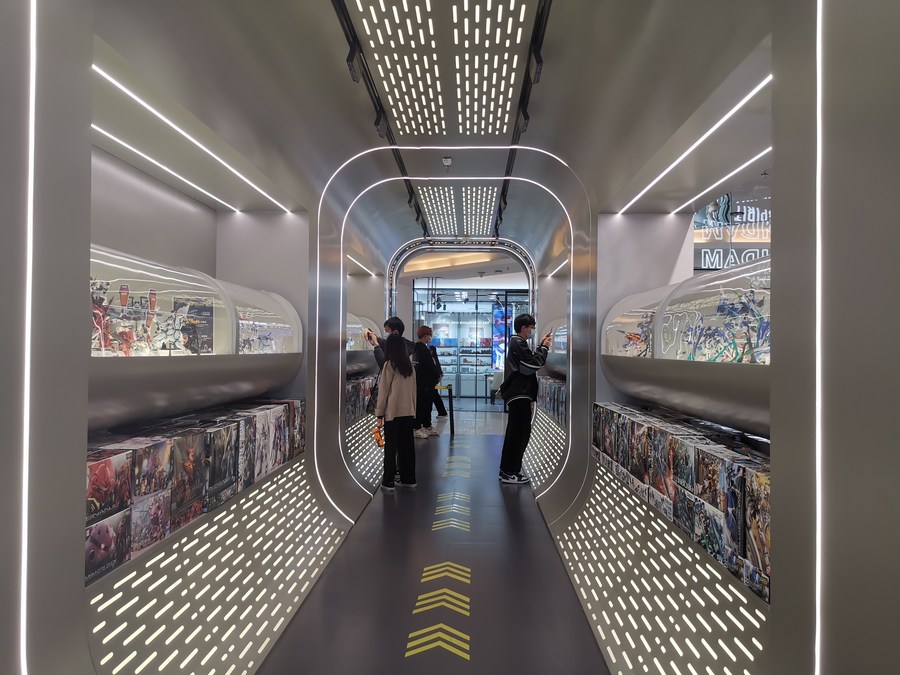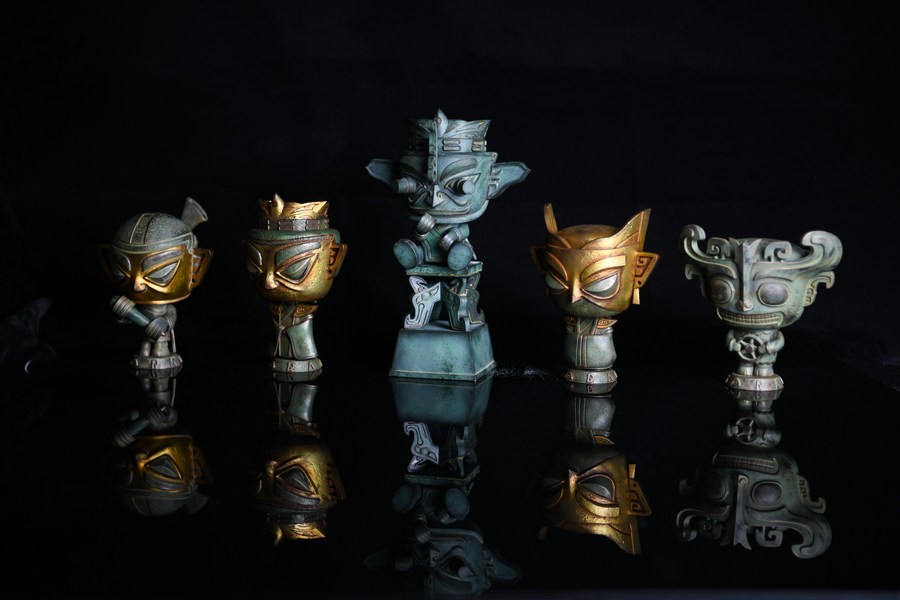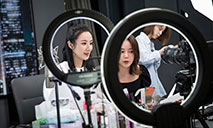Designer toys appeal to China's young art lovers

Young people shop at a Top Toy store in Guangzhou, south China's Guangdong Province, Jan. 22, 2021. (Xinhua/Deng Ruixuan)
BEIJING, Aug. 6 (Xinhua) -- The 20-something junior in college Yi Cheng caressed his new "art collection," a nut-sized toy in the shape of a lion's head, at the Beijing Dream Fair earlier in July, a days-long bash for young Chinese art buffs.
"It is a unique 3D carving, polished from an original design. It is also a perfect mix of modern technology and traditional Chinese culture," enthused the student, who can fork out more than 20,000 yuan (about 3,100 U.S. dollars) a year on designer toys.
Designer toys, or art toys, are toys and collectibles created by artists and designers and typically sold in limited editions.
"Some dismiss designer toys as mere playthings for adults. Still, there is no escaping the fact that those of relatively high artistic value sell well in second-hand mobile marketplaces, which is a testament to their collection and investment value," Yi said.
The youngster is an acute observer of this burgeoning niche market.
Many of these toys come in the form of mystery boxes or blind boxes in China, an approach that can be traced back to Japan's capsule toys and lucky bags. Statistics by iiMedia Research indicated that more than 440,000 users on Xianyu, a consumer-to-consumer marketplace spun from Alibaba's Taobao, traded blind boxes containing collectible toys in 2020. In November 2020 alone, the turnover of blind-box trading topped 120 million yuan, up over 70 percent year on year in the sector on Xianyu.
Limited editions of such toys can even be auctioned at a price dozens of times higher than their original price, let alone designer toys that are only available for lucky consumers who are chosen by drawing lots.

Toy figures are pictured at a designer's workshop in Chengdu, southwest China's Sichuan Province, Feb. 4, 2021. Inspired by a visiting experience at Sanxingdui Museum in Sichuan, the designer decided to design model figures imitating bronze relics of the Sanxingdui Ruins, which are believed to be remnants of the Shu Kingdom dating back 2,600 years to 4,800 years, blending traditional Chinese culture with fashion toys. (Xinhua/Wang Xi)
KEME Life, a company that designs and sells aesthetically appealing household products, also branches out to collectible toys.
The company's head of sales, Xu Manman, brought her daughter to the toy fair in Beijing, hoping that the artistic environment on-site can help foster her child's appreciation and interest in art.
"Designer toys can be deemed as small works of art, which offer a relatively low threshold for the younger generations to have their own art collection," Xu said.
It is almost an instinct for today's children to collect their favorites, like cards hidden in packaged snacks and toys in chocolate surprise eggs. When such a generation grows up, they are more likely than their parents to take an interest in collecting designer toys, added Xu.
A high school graduate surnamed Wu, aged 18, came from Changchun City, northeast China's Jilin Province, to Beijing for the three-day exhibition.
When Wu graduated from junior high school, she went to Britain to study. The massive cultural differences in a foreign country and the loneliness of living alone gradually led to immersion in her own imaginary world of the designer toys she bought.
"I can see the implying ideas of the designers from the toys and make up my own story," Wu said. "The toys are both pure art and goods for general consumers."
Chen Wei, CEO of 52TOYS, China's other producer and designer of such toys, believes that the toys are merely entry-level collections for young Chinese, and the sector is sure to diversify as the consumers show growing appetites and searches for new thrills.
While investors are salivating over the prospect of this niche market, China's cultural and creative industry is expecting a welcome fillip. The whole value chain of designer toys, covering designs, production, and marketing, has propelled Chinese designers to look towards traditional culture for new inspiration.
Blind boxes related to relics in the Sanxingdui Ruins site and the country's renowned museum collections were among the most sought-after at the fair, according to this year's fair host, 52TOYS.
"These products are enough to prove that the creativity and ability of Chinese designers can match that of many global brands," said Wang Yin, senior product director of a toy company.
(Intern Su Xing also contributed to the story)
Photos
Related Stories
- Latest on the COVID-19 pandemic
- China pockets two golds, Italy and Jamaica win 100m relays
- First negative list for trade in services manifests China’s determination to open its door wider
- 31 provincial-level regions warn against unnecessary travel amid rampaging Delta variant infections
- Interview: China is major anti-pandemic partner of Afghanistan, says Afghan health official
Copyright © 2021 People's Daily Online. All Rights Reserved.










